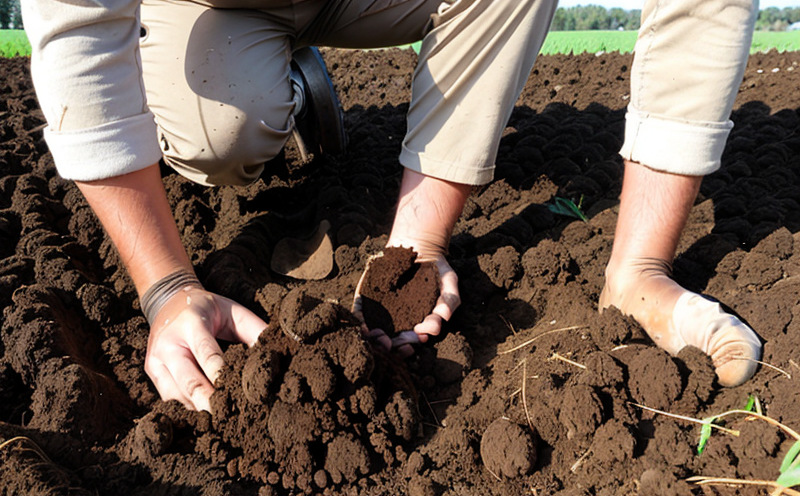Soil Compaction Testing
The process of soil compaction testing is crucial in agriculture and forestry as it ensures that soil conditions are optimal for plant growth. Soil compaction can significantly affect root development, water infiltration, aeration, and nutrient availability, all of which are vital for the health and productivity of crops and vegetation.
Compacted soils reduce the amount of available air spaces within the soil, leading to poor aeration which can hinder root respiration and nutrient uptake. This, in turn, affects plant growth and yield. Additionally, compacted soils have reduced water infiltration capacity, causing increased surface runoff and increased risk of erosion. Proper compaction testing helps to identify these issues early on and allows for corrective actions to be taken.
There are several methods available for soil compaction testing, each suited to different scenarios. One common method is the use of a penetrometer which measures the resistance to penetration at various depths in the soil profile. This provides insight into how compacted or loose the soil is across its depth. Another method involves using a soil moisture meter to measure the moisture content as it relates directly to the compaction level, since wetter soils are more prone to compaction than drier ones.
For accurate testing, soil samples should be taken from different locations within the field or area of interest. The samples should represent the general condition of the soil being tested. Once collected, the samples can be analyzed in a laboratory setting using specialized equipment such as an Atterberg Limits Test for determining liquid limit and plastic limit which helps to understand the moisture content range that will minimize compaction.
Understanding the soil structure is also important; it involves assessing how well the soil particles are arranged. This includes identifying whether the soil has a granular or platy structure, as these structures can influence how easily the soil can be compacted. The texture of the soil—whether it's sandy, loamy, clayey, etc.—also plays a significant role in determining its compaction properties.
The objectives of soil compaction testing are multifaceted but primarily focus on ensuring that soil conditions support healthy plant growth and efficient agricultural practices. By conducting regular tests, farmers and foresters can maintain optimal soil health which leads to better crop yields and overall ecosystem sustainability.
Scope and Methodology
The scope of soil compaction testing includes evaluating the density, moisture content, and structure of the soil to determine its suitability for plant growth. The methodology typically involves collecting representative samples from various locations within the field or area under study.
- Sample Collection: Samples should be taken at different depths if necessary, ensuring they represent the overall condition of the soil being tested.
- Analytical Techniques: Analytical techniques may include using penetrometers to measure resistance to penetration and soil moisture meters to assess moisture content. Laboratory tests can also involve determining Atterberg limits to understand optimal moisture ranges that minimize compaction.
The methodology aims to provide a comprehensive understanding of the current state of the soil so that informed decisions can be made regarding management practices such as irrigation, tillage, and fertilization.
International Acceptance and Recognition
- ISO Standards: ISO 14688:2015 provides internationally recognized methods for determining the bulk density of soils. This standard is widely accepted in various countries as it offers a consistent approach to soil compaction testing.
- ASTM Standards: ASTM D6937-00(2012) specifies procedures for soil penetration resistance tests, which are recognized globally for their accuracy and reliability. Compliance with these standards ensures that the results of soil compaction tests can be compared across different regions.
The acceptance and recognition of these standards in multiple countries underscore their importance in ensuring consistency and comparability in soil testing practices worldwide.
Use Cases and Application Examples
- Agricultural Fields: Testing is conducted to ensure that the soil conditions are suitable for crop cultivation, taking into account factors like root growth, water infiltration, and aeration.
- Forestry Plantations: Soil compaction testing helps in maintaining optimal conditions for tree roots which are essential for forest health and biodiversity.
- Construction Sites: Compaction testing is critical to ensure that the ground beneath construction projects supports heavy machinery without causing undue stress on the soil structure.
These applications highlight the versatility of soil compaction testing across various sectors, emphasizing its importance in maintaining healthy and productive soils.





